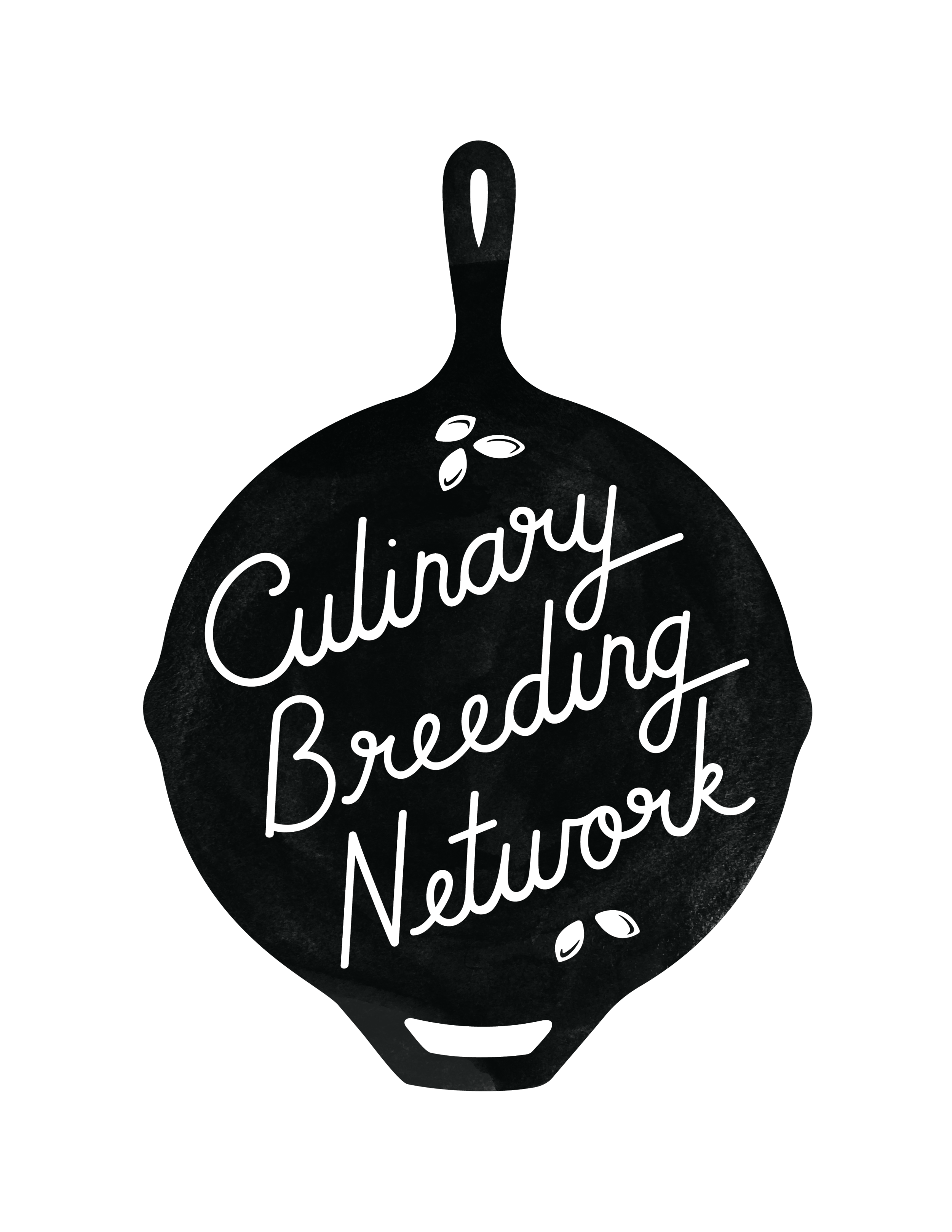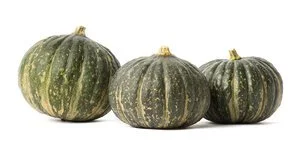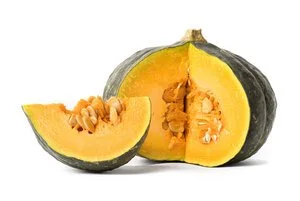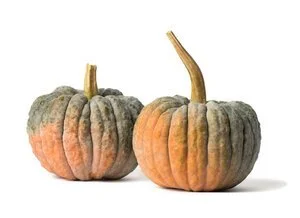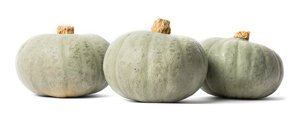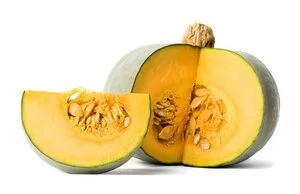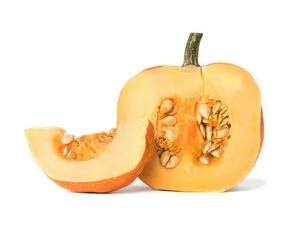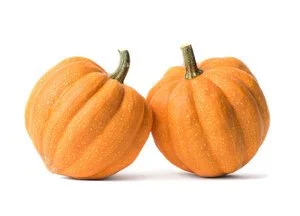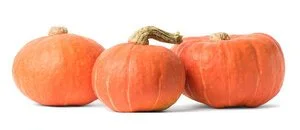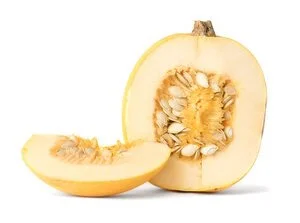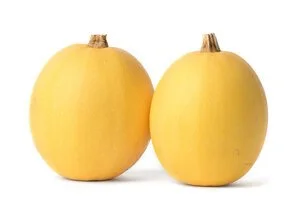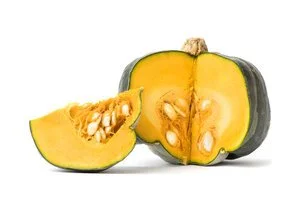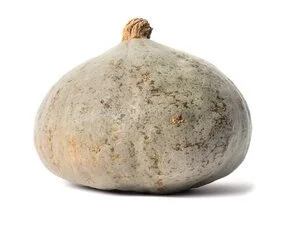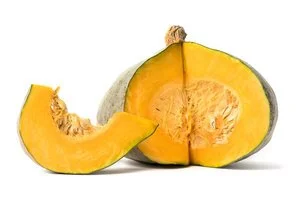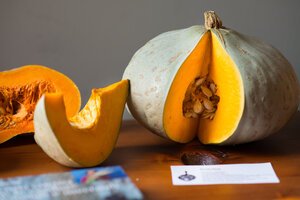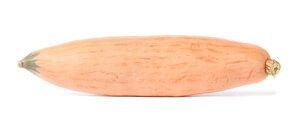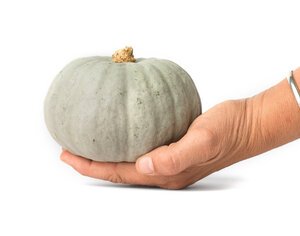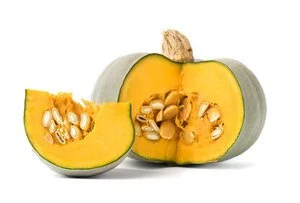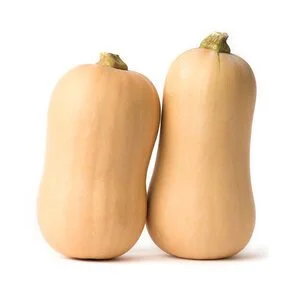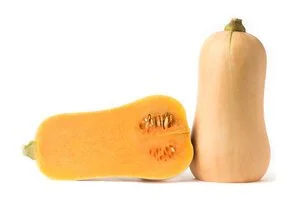Winter Squash Variety Information
Tetsukabuto (F1)
(Curcurbita moschata X C. maxima)
Hubbard type
An interspecies hybrid between C. moschata (butternut types) and C. maxima (kabochas, etc.). Tetsu has proven to be a workhorse of the squash world, and we are smitten! Seed is sold by Johnny’s Selected Seeds. This variety is popular in Japan (where it was bred) and has been wildly popular in Braxil since the 1960’s.
Tetsukabuto tastes great from mid-October all the way through April (and likely later). To help you track the change in the season, Tetsu changes color from a deep glossy green when harvested in September, to stripes of green and orange later in the fall, to a waxy tan in the deep winter.
productive
extremely long-storing with little to no loss
When to Find/Eat: October - April
Eater Descriptions: “floral and smooth”
“good, would work with many dishes”
“vanilla and carrot notes”
“canned flavor - but in a really good way!”
Black Futsu (Open-Pollinated)
(Curcurbita moschata)
Specialty
The same species as butternut but with a radically different appearance. Black Futsu is an heirloom Japanese variety that grows surprisingly well in western Oregon. There are multiple seed vendors in the US including Johnny’s, High Mowing, Adaptive, and Hudson Valley.
The squash are small - perfect for 1 or 2 people - but have superb flavor! Sweet and fruity smelling with very fine flesh, they need little adornment except a hot oven, some oil, salt, and pepper as they develop deep, nutty characteristics after roasting.
Black Futsu is dark green (almost black) when harvested in September but ripens to a tan color in the late winter. The skin is then and tender, so no need to peel before eating.
extremely high eating quality
stores well
versatile in the kitchen, including raw eating
When to Find/Eat: October - February
Sweet Mama (F1)
(Curcurbita maxima)
Green Kabocha
Full disclosure: several people involved in this project are NUTS for kabocha type squash in general, but Sweet Mama is our favorite! This hybrid is available from Territorial Seeds (among others) and won an All-American Selection in 1979. We trialed a lot of kabochas that didn’t store well, but Sweet Mama held up pretty well.
These dark green squash weigh 2-4 lbs. on average and have firm, sweet flesh with true kabocha flavor. In the field, the vines have practically no side shoots, which makes them a bit easier to maintain.
Like all kabochas, let them store for a month or two before eating.
dense flesh
better storing kabocha
versatile in the kitchen, including raw eating
When to Find/Eat: October - January
Winter Sweet (F1)
(Curcurbita maxima)
Kabocha
Winter Sweet is a stellar squash. For a kabocha type, it grows and stores very well in western Oregon. Bred by Rob Johnston of Johnny’s Seeds, and you can purchase seeds from High Mowing as well.
These gray squash weighed 2-5 lbs. in our trials and have the slightest mottling on their skin. Sweet and flaky with thick flesh. Just an all around great eating squash with versatility in the kitchen to boot! These were one of the highest rated for sweetness in our March 2021 tastings.
Like all kabochas - don’t eat them until they’ve stored for a month or two!
excellent eating quality
better storing kabocha
versatile in the kitchen, including raw eating
When to Find/Eat: October - March
Eater Comments from Tasting: “sweet like candy”
“this is delicious!!!”
“silky smooth”
“complex and deeply flavored”
“nutty and uniquely complex”
Gill’s Golden Pippin (Open-Pollinated)
(Curcurbita pepo)
Acorn
In general, C. pepo varieties are not considered “long storing.” These include pumpkins (or what Americans call pumpkins), spaghetti, delicata, and acorn types. In general, we recommend these are the types of squash you buy and eat in the fall and early winter. They don’t need to cure and don’t store as long.
However, a few years ago, Adaptive Seeds recommended this little gem and gave us a few seeds to trial. Frankly, we were charmed! Our chef loves its flavor, and we love how long it stores, so it became the token acorn squash in our project.
It doesn't hurt that it is an Oregon heirloom! Introduced in the mid 1900s by Gill Brothers Seed Company in Portland who describe it in their 1964 catalog as “fine variety.” Adaptive Seeds is bringing it back into commercial production in Oregon because as they put it, “it has 5 times the taste of most acorn squash at half the size.”
very good flavor
stores well for acorn
personal-sized fruit growing in popularity
When to Find/Eat: September - January
Sunshine (F1)
(Curcurbita maxima)
Kabocha
Sunshine really is a bright spot in the squash world. An F1 hybrid bred by Rob Johnston at Johnny’s Selected Seeds. Sunshine was an All-American Selections winner in 2004. When grown with overhead irrigation, Sunshine did not store well, but when grown on drip it held until March. One advantage of this variety is that it does not need to be cured like other kabochas before eating.
Sunshine has brilliantly colored and exceptionally smooth flesh. Our chefs really loved to puree and mash this variety to feature it in various recipes - including a really yummy squash refrigerator jam!
kabocha that doesn’t require waiting
sweet and smooth
versatile in the kitchen
When to Find/Eat: October - December (March, depending)
Small Wonder (F1)
(Curcurbita pepo)
Spaghetti
In general, C. pepo varieties are not considered “long storing.” These include pumpkins (or what Americans call pumpkins), spaghetti, delicata, and acorn types. In general, we recommend these are the types of squash you buy and eat in the fall and early winter. They don’t need to cure and don’t store as long.
Spaghetti squash is unlike any other squash. It is very low in sugar and therefore calories, making it a favorite of those following a low carbohydrate diet. As you might expect from its name, spaghetti squash can be forked into strings after baking or steaming and is commonly eaten as a pasta substitute.
In our project we grew Small Wonder, a small single-serving hybrid variety known to have more flavor than other spaghetti squash varieties. Small Wonder is extremely long storing and amazingly high yielding, especially when grown dryland. Seed can be purchased from Territorial Seeds among other places in the US.
good well
very productive
good storage
When to Find/Eat: September - February
Bonbon (F1)
(Curcurbita maxima)
Buttercup
Buttercup squash are sometimes confused with kabochas, but they have a “cup” on their blossom-end. Buttercups originated in the mid 1900's in the North Dakota State University squash breeding program. In our project we have evaluated quite a few buttercups. Unfortunately, most are susceptible to western Oregon storage rots. Of all the buttercups we tested, the hybrid 'Bonbon' bred by Johnny's Selected Seeds performed the best. Bonbon is a beautiful, glossy buttercup with a large protruding 'button' weighing in at 2-4 pounds.
We do not consider Bonbon or other buttercups true WINTER squash in western Oregon when grown with overhead irrigation; they barely make it to December because of storage rots. However, dry-farmed Bonbon stored much longer than irrigated Bonbon in our 2016-17 dryland/irrigated production and storage comparative trials, so it is possible that dryland Bonbon could become a true winter squash in Oregon.
kabocha that doesn’t require waiting
sweet and smooth
versatile in the kitchen
When to Find/Eat: October - December (March, depending)
Silver Bell (Open-Pollinated)
(Curcurbita maxima)
Banana
While it may not look it, Silver Bell is an open-pollinated selection from a Blue Banana squash population. It was introduced by Ferry-Morse Seed Co. in 1956. Silver Bell was recommended to us as a small (2-4 pound), delicious, long storing squash by our friend Beth Hoinacki of Goodfoot Farm, and it really is a winner. Seed available from several places including Seed Savers Exchange.
These gray, bell-shaped squash squash turn pink in storage. Sweet with dry flesh. In our March 2021 tasting, Silver Bell was a top performer for its appearance and texture.
productive and reliable
good storage
When to Find/Eat: November - March
Eater Comments from Tasting: “citrus”
“earthy”
“not too sweet with a little bitterness. sophisticated”
“smooth and pudding-like”
Sweet Meat (Open-Pollinated)
(Curcurbita maxima)
Hubbard
Sweet Meat is a large, long storing, and very flavorful Oregon heirloom introduced by the Gill Brothers Seed Company in Portland in the early 1900's. Carol Deppe, a plant breeder and the author of The Resilient Gardener and other gardening books, has been selecting Sweet Meat (Oregon Homestead strain) for emergence in cool soils, a small seed cavity, exceptional flavor, and long storage. Carol's stewardship of this variety has helped maintain and improve it, and the wide readership of her books have inspired many Oregon gardeners to grow it. Other strains are available from other seed companies.
From the Gill Brothers 1963 catalog: "Sweetest squash tested. Longest keeper also. Texture of meat is very fine grained. It is as sweet as the finest sweet potato. Meat is very thick, making this a heavy squash averaging 15-20 lbs. Vigorous grower usually free from disease."
Sweet Meat must be ripened for several months after harvest. Eat on or after Thanksgiving! Can be stored into spring.
long-storing
fine flavor and eating quality
versatile in the kitchen
When to Find/Eat: November - March
North Georgia Candy Roaster (Open-Pollinated)
(Curcurbita maxima)
Banana
North Georgia Candy Roaster (NGCR) is a beautiful open-pollinated heirloom pink banana weighing in at 8-12 pounds. While most widely grown in Georgia, North Carolina, and Tennessee, NGCR has performed very well in our trials in western Oregon (and reportedly in Manitoba), and won our hearts with its lovely shape and color and delicious flesh. Seeds are available from Johnny’s, Southern Exposure Seed Exchange, among others.
This is a squash that should not be eaten in September; it needs to store for a month or two to ripen into best eating quality. In the early 1900’s, Thanksgiving feasts called for “candy roaster pies” instead of pumpkin. This is a crowd favorite for making ravioli.
excellent flavor and quality
good storage
very versatile in the kitchen
When to Find/Eat: November - March
Shokichi Shiro (F1)
(Curcurbita maxima)
Kabocha
Shokichi Shiro is one of our new favorites. It is a gray kabocha weighing in at less than a pound. It is very sweet and flavorful in a tiny package! Seed is available from Johnny’s. It is quite productive giving nearly 20 fruits per plant. Buy it early as tabletop decor and cut into it after a few months.
Laura Brown bakes it (it only takes 15 minutes) and serves it to her toddler directly out of the skin! Rest assured, however, the adults will love it to. A simple roasting creates a wonderful winter side dish.
Shokichi Shiro is long storing (through January) and turns color from grey to salmon pink as it ripens.
good flavor and quality
good storage
personal-sized
When to Find/Eat: October - January
Early Remix Butternut (Open-Pollinated)
(Curcurbita moschata)
Butternut
Butternut squash has not played a big role in our project because they are already the most popular and most consumed in the US. They are well-liked because of their sweet and smooth flesh as well as being versatile and easy-to-use in the kitchen. There’s also something to be said for butternut squash being so familiar they are the quintessential squash for many.
In general, butternuts store well. The challenge in western Oregon is getting butternuts to mature - often the season is too short for fruits to ripen successfully. Several years ago, the folks at Adaptive Seeds grew an assortment of the earliest varieties they could find. They allowed them to randomly mate, then continued to plant out the seed each year as they selected for the most productive and earliest individuals. This Early Remix is the result.
For us, Early Remix has been reliable, extremely productive, and long storing. Fruits are small - medium in size, and there is still some variation in size and shape, but honestly, we love that. It means there’s a little bit of something for everybody. Butternut flavor benefits from cure time, but it is not as imperative as with some of the kabocha types.
good flavor and quality
good storage
productive and reliable
When to Find/Eat: October - January
Candystick Dessert (Open-Pollinated)
Zeppelin (Open-Pollinated)
(Curcurbita pepo)
Delicata
In general, C. pepo varieties are not considered “long storing.” These include pumpkins (or what Americans call pumpkins), spaghetti, delicata, and acorn types. In general, we recommend these are the types of squash you buy and eat in the fall and early winter. They don’t need to cure and don’t store as long.
Delicata are unlike other squash. They are relatively small and often eaten as single serving squash. A delicata type squash was first introduced by a seed company in the US in 1894. In our project, we have evaluated two open-pollinated varieties of delicata that have been selected for strong performance and longer storage in western Oregon - Zeppelin (Wild Garden Seed) and Candystick Dessert (Carol Deppe/Fertile Valley Seeds).
Delicatas in general are not particularly long storing, but these varieties can store into January. Many home cooks simply slice them lengthwise, remove the seeds, and bake them cut-side down for 20 minutes. SIMPLE!
very good flavor
stores well for delicata
crowd pleaser
When to Find/Eat: September - January
